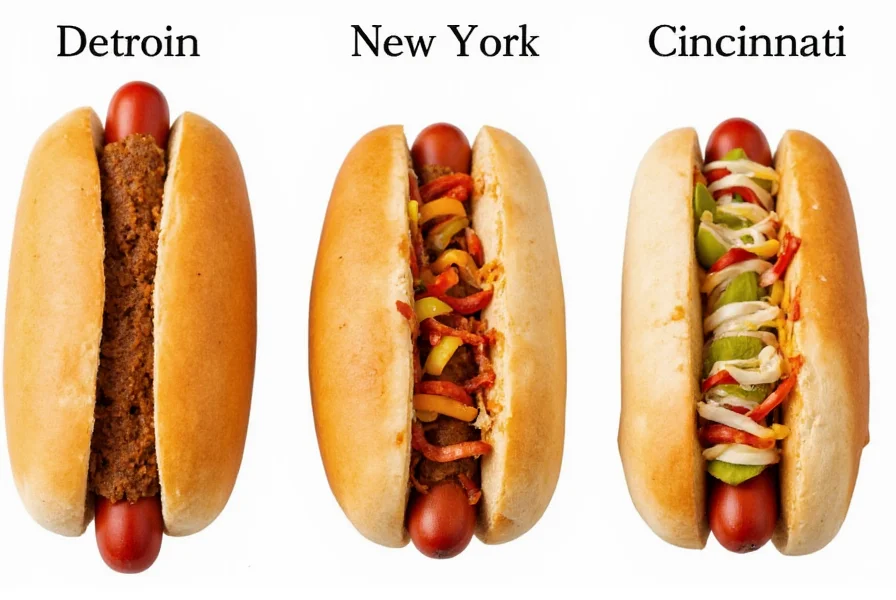Coney chili represents one of America's most beloved regional food specialties, with deep cultural roots particularly in Detroit, Michigan. This iconic topping transforms a simple hot dog into a culinary experience that has endured for over a century. The magic of authentic coney chili lies in its specific preparation method and carefully balanced spice blend that distinguishes it from standard chili recipes.
The Historical Origins of Coney Chili
The story of coney chili begins in the early 1900s when Greek and Macedonian immigrants established small eateries across America. The most famous origin narrative centers on Detroit, where brothers Tom and John Kiradjieff opened American Coney Island in 1917. These immigrant entrepreneurs adapted their traditional meat sauces to create something uniquely American that would become a Midwest institution.
Contrary to popular belief, coney chili did not originate at New York's Coney Island amusement park. The name actually refers to coney as a term for hot dogs, which predates the Michigan restaurants. The Kiradjieffs' creation spread rapidly through the Midwest industrial belt, becoming particularly associated with factory workers seeking affordable, satisfying meals.

What Makes Coney Chili Unique: Key Ingredients
Authentic coney chili follows a precise formula that separates it from other chili varieties. The essential components include:
| Ingredient | Traditional Amount | Special Notes |
|---|---|---|
| Finely ground beef | 1-2 lbs | Must be very fine grind for proper texture |
| Beef broth | 2-3 cups | Never water for authentic flavor |
| Onion | 1 medium, finely minced | Sauteed until translucent |
| Worcestershire sauce | 2-3 tbsp | Essential for depth of flavor |
| Cinnamon | 1/4 tsp | Signature spice, not found in regular chili |
| Allspice | 1/4 tsp | Creates distinctive warm notes |
The absence of beans is perhaps the most significant difference between coney chili and regular chili. Traditional coney sauce maintains a smooth, pourable consistency that properly coats hot dogs without overwhelming them. The carefully measured spices create a complex flavor profile that's savory with subtle sweet undertones.
Regional Variations Across America
While Detroit claims the most famous coney chili tradition, regional interpretations exist throughout the United States:
- Detroit Style: The gold standard featuring finely ground beef, signature spices, and a thin consistency perfect for topping hot dogs. Served with yellow mustard, chopped onions, and sometimes cheese.
- New York Style: Often thicker with additional spices, sometimes including tomato elements. Many New York establishments mistakenly call their chili "coney" without following the traditional recipe.
- Midwest Variations: In cities like Cincinnati and Chicago, coney-style sauces often incorporate local preferences while maintaining the bean-free tradition.
- West Coast Interpretations: Generally spicier with more chili powder, sometimes including regional ingredients like chipotle peppers.
Understanding these regional differences helps explain why searching for "authentic coney chili near me" yields such varied results depending on your location. The Detroit version remains the most historically accurate representation of this American classic.
How Coney Chili Should Be Served
The proper presentation of coney chili follows specific traditions that contribute to the complete experience:
- Steam the hot dog bun until warm and slightly moist
- Place an all-beef hot dog in the bun
- Pour warm coney chili generously over the hot dog (never cold)
- Add a line of yellow mustard down the center
- Sprinkle with finely chopped white onions
- Serve immediately while hot
Many establishments make the mistake of serving coney dogs with ketchup, which traditionalists consider inappropriate. The combination of savory meat sauce, tangy mustard, and sharp onions creates the perfect flavor balance that has made this dish endure.

Common Misconceptions About Coney Chili
Several myths persist about coney chili that deserve clarification:
- Myth: Coney chili originated at Coney Island, New York
Fact: The name refers to the hot dog style, not the location. Detroit claims the authentic origin. - Myth: All chili served on hot dogs is coney chili
Fact: True coney chili has specific ingredients and preparation methods that distinguish it from generic hot dog chili. - Myth: Coney chili must include chocolate or coffee
Fact: While some modern variations include these, traditional recipes rely on the spice blend for complexity.
When searching for "how to make authentic coney chili from scratch," it's important to verify that recipes follow the traditional bean-free formula with the characteristic spice profile.
Frequently Asked Questions
What's the difference between coney chili and regular chili?
Coney chili contains no beans, has a finer meat texture, and includes distinctive spices like cinnamon and allspice that create its unique flavor profile. Regular chili typically contains beans, has coarser meat, and relies more heavily on chili powder and cumin without the subtle sweet spices.
Why is it called coney chili if it didn't come from Coney Island?
The term "coney" refers to a specific style of hot dog that existed before the famous Detroit restaurants. The Kiradjieff brothers named their establishment American Coney Island after the popular hot dog style, not the New York location. The chili became known as "coney chili" because it was created specifically for topping coney dogs.
Can I make authentic coney chili without the special spices?
While you can make a chili-like sauce without cinnamon and allspice, it won't be authentic coney chili. These spices create the distinctive flavor profile that defines the dish. Many traditional Detroit coney restaurants guard their specific spice ratios as proprietary secrets, but cinnamon and allspice in small amounts are essential components of the genuine recipe.
How long does homemade coney chili stay fresh?
Properly stored in an airtight container, homemade coney chili will stay fresh in the refrigerator for 3-4 days. For longer storage, freeze portions in freezer-safe containers for up to 3 months. The flavor often improves after 24 hours as the spices meld together, making it ideal to prepare a day ahead.











 浙公网安备
33010002000092号
浙公网安备
33010002000092号 浙B2-20120091-4
浙B2-20120091-4